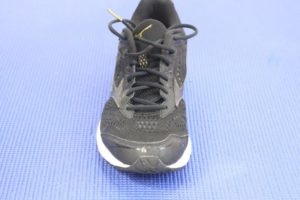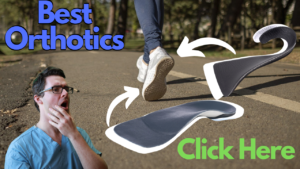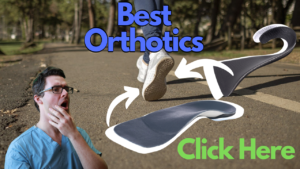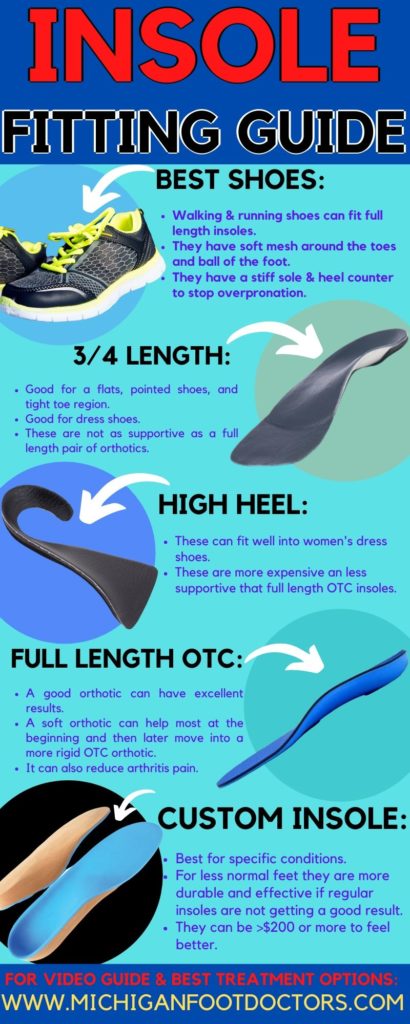Best Shoes & Best Insoles
How to Make Shoes Fit Smaller [For Shoes Too Big For Your Foot!]
Did you ever buy shoes that are too big? We will teach you how to make shoes smaller. 90% of the time, you will have this stuff right in your own home.
Look:
- A loose-fitting shoe can be made to fit better with a few small changes.
- We are foot doctors & we see this problem get better almost every day.
- The goal is to solve this problem as simply as possible.
So, let’s GO!
Table of Contents
How to make big shoes fit smaller video:
How to make shoes smaller that are too big with orthotics:
Top 10 ways to make your shoes fit smaller for shoes that are too big:
1) Get Big Socks:
- This is best for winter weather.
- Have you ever worn a thin dress sock in your shoe that felt loose? Well, get a big thick pair of socks. This is by far the best and easiest solution.
- This is the easiest option, and you’ll have to buy anything special. The only downside is your feet will probably sweat a decent amount!
- If you can even wear two socks or three socks, then this should also work even better.
- The more padding use on your foot, the smaller the shoe will get. This method is especially effective for sports shoes and winter boots. In the winter, you can make even the thickest boots feel better by wearing good winter socks.
- The main downside is that this method is not very effective during the summer or warm weather locations. This is best for people that live in cold climates.
2) Use tissue paper or toilet paper:
This is best for fancy shoes.
This is the second easiest solution. We have many patients who use this in their shoes, take some toilet paper and patted up, and put it in the front of your shoe where your toes would normally go. This stuff is in there easily, and it will prevent your foot from sliding around. This does not work as well in the heel.
This works best for heels, flats, and boots.
This is more for special occasions and is not meant for shoes meant to walk for a very long time, like hiking boots or running shoes.

3) Double up on insoles:
Quick and practical solution.
Do you have another shoe that is of a similar size? Well, pull the answer out of that running shoe and put it on top of the insert in this new shoe that is too big.
This is a swift and effective solution that almost everybody can try almost immediately. The main downside is that you squish it in the middle of your foot by doing too much of this. It does not really help for a loose heel or long toes.
4)Get an orthotic:
This does not need to be a very expensive custom orthotics. You’d certainly don’t want to buy a $500 custom insert to make your shoe fit better. But this is probably the most practical and long-term solution.
You can buy a great pair of over-the-counter inserts for 20 to 30 bucks that will probably make your knees have been back feeling a lot better, plus your shoe will fit perfectly.
This is my personal number one method as you are guaranteed to feel better and have your shoe fit a lot better.
This is probably my number one solution.
Podiatrist Recommended Orthotics:
- These are our recommended orthotics.
- There are different types of different shoes.
- Women’s shoes usually need a less bulky orthotic but allow for less correction.
- A full-length orthotic requires a running shoe, boot, or comfortable walking/dress shoe.
- We recommend doing everything you can to get a good supportive shoe that can fit a full-length orthotic.
- This is the best way to maximize your orthotics for great results.

5) Use foot pads:
This is the best method if you are loose in the front of your shoe. Metatarsal pads and toe crest pads are excellent for books conditions like bunions and hammertoes if this is where you’re having problems fitting.
6)Heel Strips:
Best for a loose heel.
If you have a loose heel, try heel strips. Heel strips can cushion the back of your heel around where your Achilles tendon inserts. This also prevents your heel from popping up out of the shoe.
You can usually get these at any convenience store or pharmacy for under five bucks. Also, test online if you can get them here.
Options that probably overkill and not that great for making your shoe smaller:
7) Use water to shrink your shoe:
Obviously, certain common materials get smaller when they are washed or dry. One solution online that some people have succeeded with is putting your shoes in a washer and dryer. This can deftly shrink the shoe.
The downside is that even if you follow these recommendations, it will usually ruin your shoe. You can get fancy and trying to use specific leather spray methods and put your shoes in a dryer and let them so. I wouldn’t recommend this. Do this at your own risk.
8) Returning the shoe:
If you did buy this at a shoe store, for sure going to return it, but I’m guessing if you’re reading this guide, then you ordered your shoe online. This is probably a big waste of time unless the shoe is pricey. Try some of the methods in this list and see if this helps first.
9) Use an elastic band.
- Have you ever tried to mold your baseball glove by putting in a row elastic around a baseball? This is the same idea.
- The shoe might tighten if you can squeeze it down, but this does not seem very practical.
10) see a cobbler:
- This is probably your best bet if you have an amazing shoe or a high brand or high-quality shoe.
- If you have a fancy-dress shoe or a limited-edition basketball shoe, this is probably the way to go for you. See a professional get this taken care of.
- Bonus way to make your shoe fit smaller: See a podiatrist.
11) see your podiatrist:
if you get custom orthotics made for yourself, you will do a whole lot better.
The Top 10 list:
Get Big Socks:
Use tissue paper or toilet paper:
Double up on insoles:
Get an orthotic:
Use foot pads:
Heel Strips:
Use water to shrink your shoe:
Returning the shoe:
See a cobbler:
see your podiatrist:
Podiatrist Recommended Orthotics:
- These are our recommended orthotics & insoles.
- Different insoles & orthotics are needed for different types of shoes.
- Women’s shoes usually need a less bulky orthotic but allow for less correction.
- A full-length orthotic requires a running shoe, boot, or comfortable walking/dress shoe.
- We recommend doing everything you can to get a good supportive shoe that can fit a full-length orthotic.
- This is the best way to maximize your orthotics for great results.

Best Full-Length Orthotics:
- These will only work in wider shoes or a good supportive running shoe.
- They do have better correction if you can fit them into your shoe and get a good fit.
- Usually, it is necessary to go up 1/2 size or full size to be able to fit them.
- This will not work in sandals, flats, or most women’s dress shoes.








Best Dress Shoe Orthotics:
- These are a great choice for dress orthotics.
- If you have a pointed shoe, this may benefit most from 3/4 orthotics.
- A full-length dress shoe orthotic can work better in wide-toe box or loafer style dress shoes.






Best 3/4 Length Orthotics:
- These are great options for women’s dress shoes and thinner shoes.
- This may be a good starting option for insoles and orthotics if you have never worn a pair before.
- The break-in period may be easier than getting used to a firmer full-length pair.
- These are not the most supportive pair of orthotics.


Get A Great Dynamic Stretch:
- It is possible to stretch on your own, but these products can also really help!
- These are a great option for increasing foot flexibility.
- I personally use these stretching devices every single day to maintain good flexibility and shoe fit.
- This will take pressure off of the ball of your foot.
- We personally prefer this method of stretching.








Best Shoes & Best Insoles

